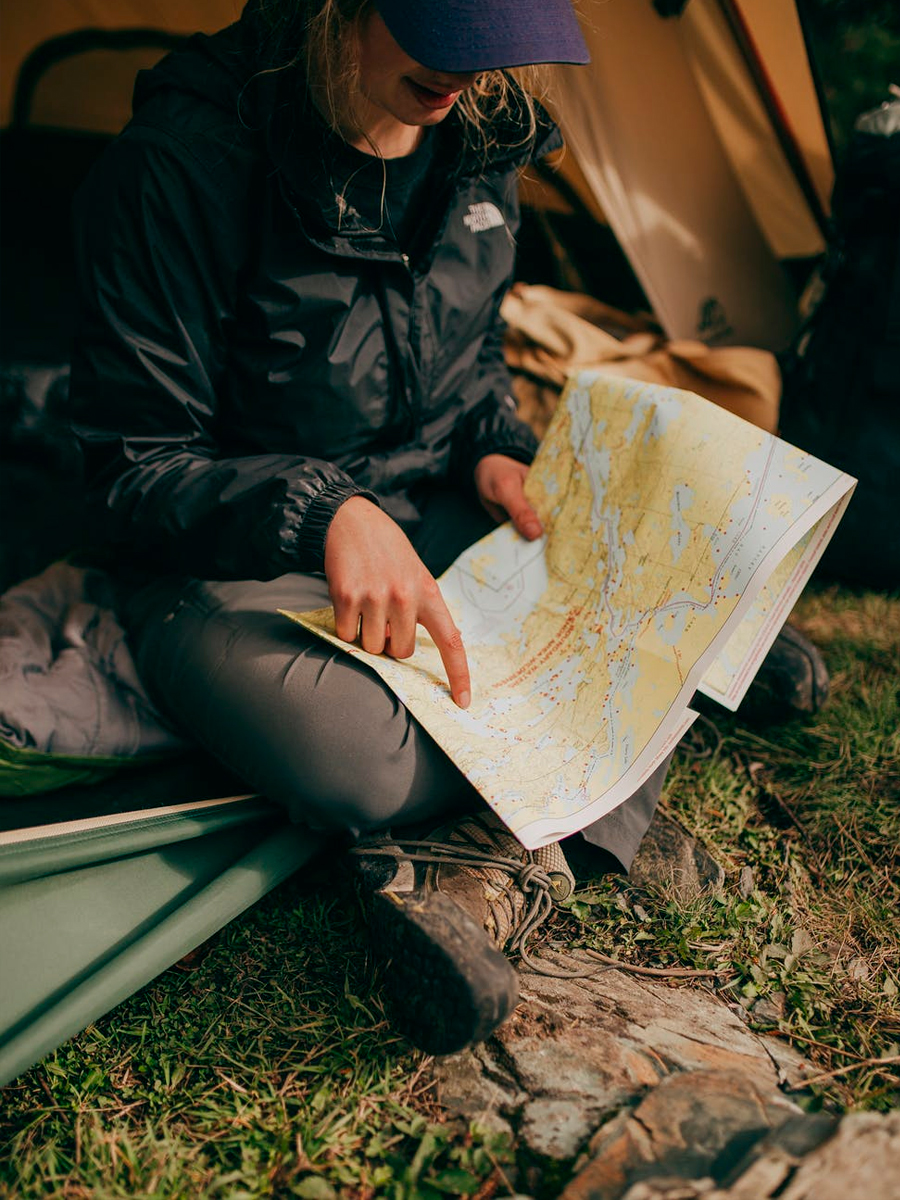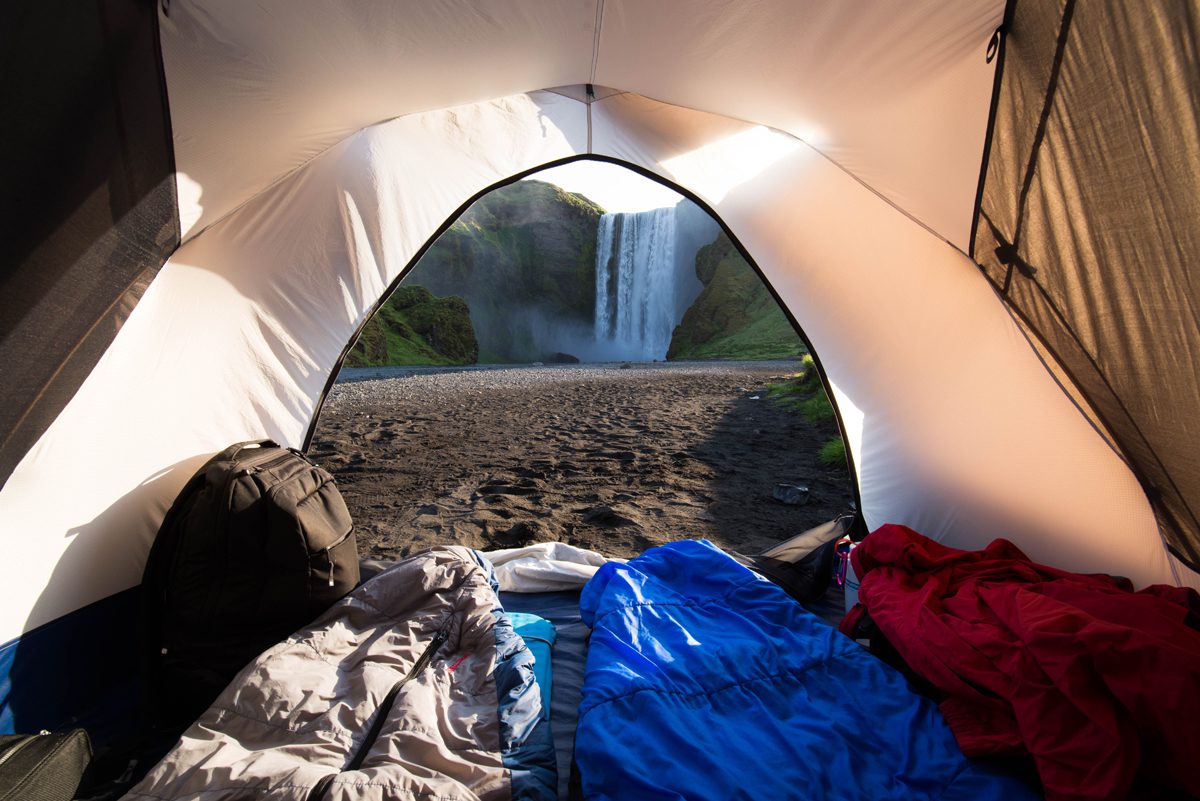Phone
+1-650-666-095
Contact E-mail
[email protected]
Address
16192 Coastal Hwy, Lewes, DE 19958-3608
How to Choose Sleeping Pad: Finding the Right Fit like a pro


Sleeping pads aren’t as exciting as tents, grills, or even sleeping bags, but they are an essential part of your camping gear. So how to choose a sleeping pad?
Just like with other camping gear and outdoor gear, you need to match your items with your environment, preferences, and overall camping type. The same is true with sleeping pads. Choose the wrong one, and you may be in for a rough trip.
No, you can’t lug your bedroom mattress with you on your camping trip. Initially one might think that all sleeping pads are the same, and can be used for all types of camping, but that’s not the case.
We are here to help you choose the right sleeping pad for you.


What is a Sleeping Pad?
In terms of camping gear, a self inflating sleeping pad is anything intended to be used under your sleeping bag. It acts as a mattress, providing cushioning, stability, and usually heat retention or insulation as well. These pads are available in a wide variety of types, shapes, and textures, and each offers varying degrees of comfort and mobility.
Sleeping pads are designed to function as both a cushion and as support for your body and sleeping bag, resulting in ideal sleeping conditions when lying on the ground. You can read about how they work here.


How to Choose Sleeping Pad for Camping?
After you’ve looked up all of the different types of sleeping pads, compared prices, and R-value, you can’t seem to figure out which one to choose? This is why we have a list of things that you need to assess before making your choice.
First, you need to know what types of sleeping pads there are and which type do you need.
After that, you need to know what types of characteristics different types of sleeping pad have.
Last but not least, you need to think about how and why you’re going to use your pad. Of course, it’s going to be used for camping but there are different types of camping. These might include:
- Types of camping like glamping
- Backpacking and Thru-hiking
- Survivalist Camping
- Winter RV or Van camping
- Car or Tent Camping


Now you need to be sure how you’re going to use your sleeping pad. If you engage in backpacking, you definitely shouldn’t get a memory foam mattress. This is because it’s bulky and heavy, unusable in backpacking situations.
If you plan on glamping or canoe camping, make sure to purchase the fitting gear for this type of outdoor activity. You need to be honest and realistic in this case. Buying a camping mattress and never using it would be a big error.
Types Of Sleeping Pads
Although sleeping pads vary greatly depending on the actual product, they can usually be broken down into five distinct categories, each with its own characteristics, functions, and uses.
Air Pads


These sleeping pads need to be filled with air before being used. This can be done with your own breath, or by using a hand pump.
Air mats can be very comfortable, and they are rather simple to use, despite being the only type that requires some additional setup. These inflatable pads are very lightweight, and can often be stored in a small sack. An air pad is also easily adjustable, allowing users to choose their ideal level of firmness.
Some of the more common disadvantages of an air mattress involve being fragile in some conditions, and the tendency to be a bit loud when moving around on one.
Closed-cell Foam Pads


Foam pads are exactly as the name implies, made of foam. These pads offer varying degrees of cushioning and insulation, can be thick, thin, smooth, and textured, depending on the model.
While they may seem rather simple, a close cell foam pad is specifically engineered to offer added levels of heat retention in cold conditions, while others can be designed to deflect heat away in warmer climates.
A common characteristic is that foam pads are incredibly lightweight, and can easily be transported on the outside of a backpack.
Although foam pads are light and durable, they are still the least comfortable of the three main types. Some campers and backpackers still prefer them, however, and many often choose to layer a foam pad under another sleeping pad for added cushioning, warmth, and protection.
Self-Inflating Pads


As you might expect, self inflating mats inflate on their own, without the need for any extra air. Simply open the valve, and the pad automatically inflates to full level.
The combination of foam and air chamber results in the most comfortable feel out of the three main pad types and offers the most stability as well. An self inflating pad is usually highly insulated, making them good for cooler climates, although they are perfectly fine for summer camping as well.
Self-inflating pads have high durability and can withstand most scrapes and pokes. Depending on the model, some pads can be connected with similar models, creating a larger sleeping surface.
The only real downside to self-inflating pads is their overall size and weight. They tend to be heavier than closed-cell foam and air pads. For the everyday camper, this isn’t really an issue, but backpackers may have a problem with trying to fit the pad in with the rest of their gear.
Open-Cell Sleeping Pads


Just like the self-inflating sleeping pads, the open cell type of camping mat offers a high level of cushioning and insulation. They are bulkier and heavier, like any other self inflatable pad. Unlike their counterpart, they are manually inflating.
This means, when setting the pad up, one needs to manually add or inflate air into it. This adds some extra steps into the setup process but offers great cushioning and insulation.
Memory Foam Pads


Last but not least comes the bulkiest and heaviest version of the camping pad. The memory foam pad is just what it says it is: A pad made of a thinner layer of memory foam, perfect for the RV or van camper out there. What it lacks in size, it offers through maximum insulation and comfort.
So if you are planning on choosing this comfortable style of the pad, make sure you don’t plan on carrying it too far away from the car.
Alternative to Sleeping Pads
A camping cot is an alternative to the other sleeping pad types if you prefer an elevated sleep system. It consists of fabric and a metal frame, making it heavy and bulky to carry around. But if you find better comfort using a cot when camping, and you can compromise taking in additional size and weight, cots are an excellent option. You may refer to this article for a more detailed comparison between sleeping pads and cots.
Notable Characteristics of Camping Pads
While sleeping pads do vary depending on the type and particular model, there are some characteristics that you can use to better determine the right one for you.
Weight
Sleeping pads are lightweight by default, but some more than others. Ultralight backpacking pads are often thin, and can weigh as little as ½ a pound. Camping sleeping pads that are much thicker and insulating, can weigh around 4-5 lbs. It’s best to keep things under 4 lbs if possible.
Length and Width
You’re obviously going to want to choose a backpacking sleeping pad that can accommodate your body type and size. Backpacking sleeping pads will usually have a smaller size that tapers down towards the legs to save weight and packing room.
R-Value


A common rating listed on sleeping pads, R-value refers to the pad’s abilities to resist heat flow. The higher the R-value, the better the pad is at insulating. A value of 5 is considered to be in the middle, while 3 is better for hotter climates. R-values over 7 are suitable for very cold camping.
Construction and Material
Some sleeping pads opt for a smoother surface texture, while others may incorporate grooves and other features that help with slipping and positioning. It’s also common to see sleeping pads that have built-in “rails” on the side to keep you from rolling off, while others may have a built-in pillow area. Some can be easily made into double camping pads for two persons, just by connecting them to each other.


Packed Size
Campers don’t want to mess up on their sleeping pad’s packed size when making a choice. They prefer pads that are easy to pack and deflate and pack down to a small size into a stuff bag, making it convenient to carry to most outdoor adventures.
How to Choose Sleeping Pad Type for You
Now that you know about all of the different types and characteristics of camping sleeping pads, and how to choose your sleeping pad, listed below are the most ideal mats to use for certain types of camping. By taking into consideration the characteristics, we will tell you which pad is our favorite in the category.


Backpacking, Trekking, and Thru-hiking
When backpacking, you have to carry a large amount of gear on your back, which means that everything needs to be as compact and light as possible. While foam pads are almost always the lighter option, many of them are difficult to break down to a smaller size.
Air pads are often only a bit heavier, so this makes them the best option for both ordinary backpacking and ultralight backpacking.
Some self-inflating pads are made for backpacking, but these are usually quite expensive, and difficult to find, making air mats the most popular choice.
Verdict: Air pads


Winter Camping
Winter camping is dependent upon gear that is designed for cold temperatures, both during the day and at night. Getting proper sleep in a safe manner is of the utmost importance, making your sleeping gear setup crucial.
Self-inflating pads are going to be your best option, as they have a better amount of insulation and more cushioning.
Verdict: Self-inflating sleeping pads
Summer camping


Unlike winter camping, during the summer one can relax and bring a more versatile sleep set up to camp. When choosing between air pads, self inflating, closed and open cell foam pads, and memory pads, one would have to think: Which one would be the best?
Air pads offer cushioning but make noise when used, open-cell mats are on the more uncomfortable side and a memory foam mattress would be on the hotter side. So we believe the perfect choice is a self-inflating camping sleeping pad with minimal setup and optimal comfort.
Verdict: Self-inflating sleeping pads
Car Camping
Car camping or popularly, tent camping, refers to what’s likely the most popular type of camping in existence. Just like we say in our Car camping article, you drive directly to the campsite, where you can then unload and setup, or take a short walk to your camping area. This allows much more camping gear to be brought along.
Because of this, self-inflating sleeping pads are the best choice. These pads are usually a little bulkier and heavier than other pads when stored, but since you are unloading right by your campsite, this isn’t an issue. They can often be made into a double sleeping pad , making them an ideal choice for couples and families as well.
Verdict: Self-inflating sleeping pads
RV or Van camping


Unlike car camping, with this type of camping, you really do sleep inside of your vehicle. With that being said, one needs to know that you need a sleeping platform, for the best sleeping setup. On top of that. a great addition would be a memory foam mattress that offers maximum comfort and doesn’t need to be moved around all the time.
Verdict: Memory foam pads
Glamping


A very popular type of camping in recent years is glamorous camping or glamping. If you want to set foot in a real fairytale with luxurious tents and sleeping pads alike, you might want to consider glamping. Comfort is the way to go when it comes to glamping, and most glampers love to use their cushioning memory foam mattresses when out on adventures.
Verdict: Memory foam pads
If our verdicts still don’t do the trick, and you can’t figure out what type of inflatable sleeping pad to purchase, we will also tell you what type of pad is compatible with which type of camping. We hope this helps in determining which one and how to choose the best type of sleeping pad for yourself.
| Type of camping | Compatible types of camping pads |
|---|---|
| Car camping | Air pads self-inflating pads open-cell foam pads memory foam pads |
| Backpacking and other tour-type camps | Air pads self-inflating pads open-cell foam pads closed-cell foam pads |
| Winter camping | Air pads self-inflating pads open-cell foam pads |
| Summer camping | Air pads self-inflating pads open-cell foam pads closed cell foam pads memory foam pads |
| RV or Van camping | Memory foam pads |
| Glamping | Memory foam pads |
| Survivalist | Air pads self-inflating pads open-cell foam pads closed-cell foam pads |
Our Choice: The KAMUI Self-Inflating Sleeping Pad


We here at KAMUI offer an amazing family-style sleeping pad with multiple purposes. you can use it from car camping, survivalist, tent camping, backpacking, side sleeping to even winter camping because of the high R-Value of 5.7. Here are some of the reasons you might want to consider getting our mat of choice;
- Weight: 3.5 pounds
- Measure: 75.6 x 25.6 x 2 inches
- Available colors: blue and green
- Designed for family camping
- R-Value 5.7 makes it a four-season pad
- Comes with a stuff sack
- Self-inflating valve
- Connectable with other pads
FAQ: How to Choose Sleeping Pad
What size of sleeping mat should I buy?
It depends on your body type and size, if you are tall consider getting a large or long size that goes above 6 feet. Regular-sized mats are designed to be up to 6 feet and small or short sizes below.
Are self inflating mats comfortable?
Yes, all camping gear mats are comfortable, like firm beds. Then again, some more than others. The thickness of the pad depends on the insulation and comfort it offers. This means a thick pad offers more heat and insulation from the ground but at the same time, is bulkier and weighs more. This is why you need to know how to choose your sleeping pad, based on your needs.
What is the best thing to sleep on when camping?
The best thing you can choose is a sleeping mattress designed for camping. it is made for colder climates, offers enough cushioning for your back, and will get you through the night and ready for new adventures the next day.
What kind of sleeping pad do you need?
Based on our gear review above, every type of sleeping pad may suit a different kind of outdoor activity. Each adventure may require sleeping pads with different R-values, packed sizes, or cushioning. Overall, it’s wise to invest in a sleeping pad that can be used for all seasons, like the KAMUI self-inflating sleeping pad.
When and where will I be using this sleeping pad?
You will use your sleeping pad as a sleep system that provides excellent thermal resistance to help you retain body heat and prevent heat loss when sleeping in the backcountry, especially when temperatures are chilly. If your sleeping pads have side buttons, you may attach two or more to have a wider sleeping surface if you’re camping with your friends or family.
What are some tips for sleeping pad care and maintenance?
If you want to know how to store, care and maintain your KAMUI Self-inflating Sleeping Pad to maximize its length of usage, this post will be helpful.
Conclusion
By now you should see that camping sleeping pads are quite different from each other, and each has its own uses that are more inclined to certain conditions and camping types. By choosing the correct sleeping pad, you can ensure that your camping experience is as comfortable as possible, each and every time.
Be sure to consider the type of camping you engage in most before purchasing, and always check the sizing to make sure it’s a proper fit. We hope that after reading this article, you won’t have to wonder how to choose the best sleeping pad for camping, ever again. Happy camping!
Resources
KAMUI Self-Inflating Sleeping Pad
- Connectable with multiple sleeping pads
- 4-season sleeping pad
- Provides great back support
- Comes with a storage bag






